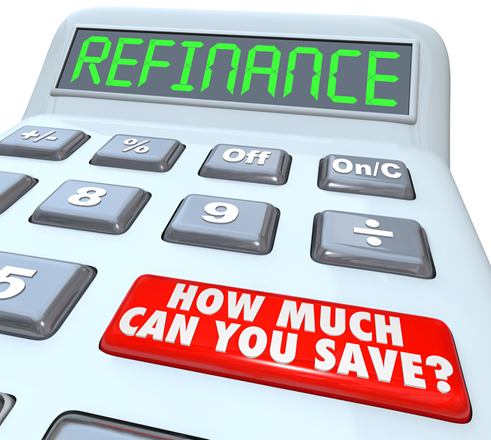Summary
- People who want to buy a home usually prefer to opt for a mortgage loan.
- There are mainly two types of mortgages - fixed-rate and adjustable-rate mortgage.
- The borrower undertakes to repay the loan over the time, usually in a series of regular payments.
A mortgage is a loan that a person takes when buying a home or any real estate property. The borrower undertakes to repay the loan over the time, usually in a series of regular payments. The property is used as a security for the mortgage loan.
However, a loan is different from a mortgage loan. A loan is used to describe a financial transaction where one party gets an amount and agrees to pay the money back. In comparison, a mortgage is used to finance the property. It is a type of loan, but not all loans are mortgages.
What are the types of mortgages?
Two types of mortgages are commonly used - one is a fixed rate, and the second is an adjustable rate. Adjustable rate is also known as variable rate mortgage.
Fixed-rate Mortgage
Borrowers with fixed-rate mortgages have a fixed interest rate for a specified period, usually 15, 20, or 30 years. It depends on the buyer; If he pays a significant amount monthly, he will have to pay the loan for a shorter duration. In contrast, the smaller the monthly repayment amount is, the longer the borrower takes to pay, and the borrower would have to pay more interest.

Source: © Puttachat002580 | Megapixl.com
The most significant benefit of a fixed-rate mortgage is that the borrower can count on the same monthly mortgage payment every month for the loan duration, making it easier to plan household budgets and avoid any unexpected additional charges from month to month. The borrower does not require to make larger monthly payments even if market rates rise dramatically.
Adjustable-rate Mortgages
Interest rates on adjustable-rate mortgages (ARMs) usually vary over the life of the loan. Interest rates fluctuate as market rates and other factors change, affecting the amount of interest the borrower must pay and, as a result, the total monthly payment due. The interest rate on adjustable-rate mortgages is set to be reviewed and altered regularly. It can be changed once in a year or in six years\.
Who can get a Mortgage?
Most people prefer to get a home with a mortgage. It is useful when a person cannot make full payment for a house they are buying. However, some cases make sense to get a mortgage loan even when you have the money to make the full payment. For instance, it happens when an investor mortgages a property to save the funds for some other investments.
To get a loan, one must meet specific eligibility requirements. The person should have a reliable and stable income, decent credit score and a debt-to-income ratio of less than 50%. A credit score should be at least 580 for FHA loans (federal housing administration) and 620 for conventional loans.
How to pay off Mortgage in 10 years?
In most circumstances, homeowners can pay off their mortgages early if they follow a few guidelines and make sure their loan terms are met.
The first thing is to understand how your payment system operates. Initially, most of the 30-year loan's payment goes toward interest. As the loan is about to complete, most of the money goes toward principal or the amount you borrowed. However, if the principal is reduced by making extra early payments, the amount of interest paid is reduced.
In the long run, paying down the principal reduces the total interest paid on the loan. When the principal amount is almost paid more, the borrower creates equity in the home. To quickly calculate equity, first determine what you believe the home is worth, then deduct the loan balance. If a home is worth $300,000 and the loan balance is $150,000, you have $150,000 in equity.
Following are the few tactics that one can use to pay off the mortgage loan early:
- Make biweekly payments:Subtract half of your monthly mortgage payment and transmit it every two weeks. You will have paid the equivalent of 13 monthly instalments by the end of the year. A standard 30-year loan can be shortened by four to six years using this technique. Biweekly payments on a 15-year mortgage might decrease the repayment time by one to three years, depending on the loan amount and interest rate.
It also depends on the lender if he does accept biweekly payment.
- Try to make an extra payment each year:If you do not want to deal with the inconvenience of biweekly payments, you can save money by paying an extra payment once a year. You might be able to fund this plan with a tax refund or a bonus. If you put the entire amount toward the loan principal, you can cut your payback period by up to seven years provided you make extra payments every year.
- Send an extra amount for the principal each month:If a borrower cannot pay an extra payment every year, he can consider paying an extra amount each month. It is a better option to prepay the mortgages for the people who have no discipline to save money.
- Recast your mortgage loan:Consider refinancing your mortgage if you receive an inheritance or other windfall. When a lump sum payment toward the principal is received, some loan servicers offer this option. Companies recast loans so that the period remains the same, but the monthly payment is decreased due to the reduced principal.

Source: © Iqoncept | Megapixl.com
- Refinance your mortgage loan:You could also apply for a new loan to refinance your mortgage. It can lower down the interest rate and save money as well. You can also refinance for a shorter term to get rid of your debt early.
For example, you can get a 15-year mortgage loan instead of a 30-year loan term. Although monthly payment will be higher, the borrower can cut down on their interest cost significantly as compared to interest paid in a 30-year period loan repayment tenure.
Many people believe that they will have to pay a double payment on a 15-year-old loan as a 30-year loan. But this is incorrect; the increase of interest would be significantly less.
- Choose a flexible term for loan:The most common terms for mortgage loans are 15 and 30years, but other options are available. One should consider if they can pay the short-term loan. For shorter-term loans, one will have to pay less money on interest.
You can also take the help of an independent broker if you are confused in choosing the term to choose for a loan.
Bottomline
For paying your mortgage 20 years early, you have to choose a combination of methods shared above. These methods can be - refinance to lower your interest loan, additional principal payment each month or select a shorter loan term. Another creative way to raise money is to rent out the home.
For example: On average, homeowners earn $10,000 each year, and on their $200,000 mortgage at 4% interest rate, an extra $10,000 a year could reduce a 30-year term to 12 years and save the homeowner more than $90,000 in interest.
Also Read: Banks Want Government to Overhaul Mortgage Support Scheme






